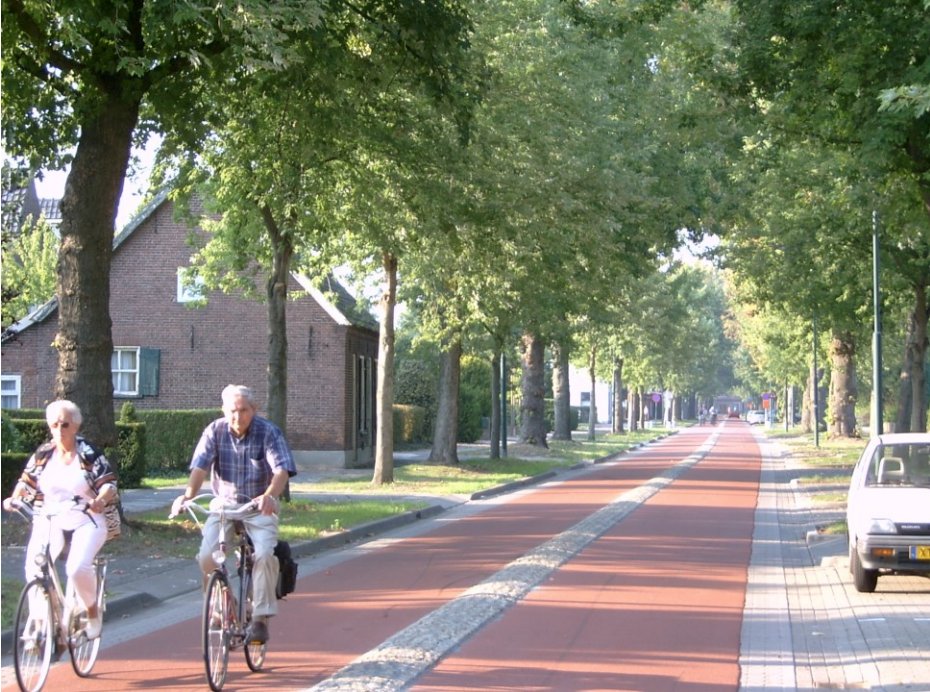The public ROW on Portland seems to be about 14.2 m based on the satellite images. Here's a concept for how that could look as a
fietsstraat (bicycle street).
View attachment 500989
The Ontario Traffic Manual requires a minimum width of 1.8 m for a contraflow bicycle lane, which is probably overkill on a 30 km/h local street where bikes can use the whole width of the street as required. But anyway I kept the road visually as narrow as possible by paving part of both of the lanes in a contrasting material. The sum of the asphalt plus the bricks is the OTM minimum lane width.
Making the road appear too narrow for cars/trucks (while actually being wide enough thanks to the coloured shoulder) substantially lowers the speed of motor vehicles and emphasizes that they are not in a space designed for cars.
Most of the buildings are set back from the public right of way so there is room for patios outside of this cross-section.








